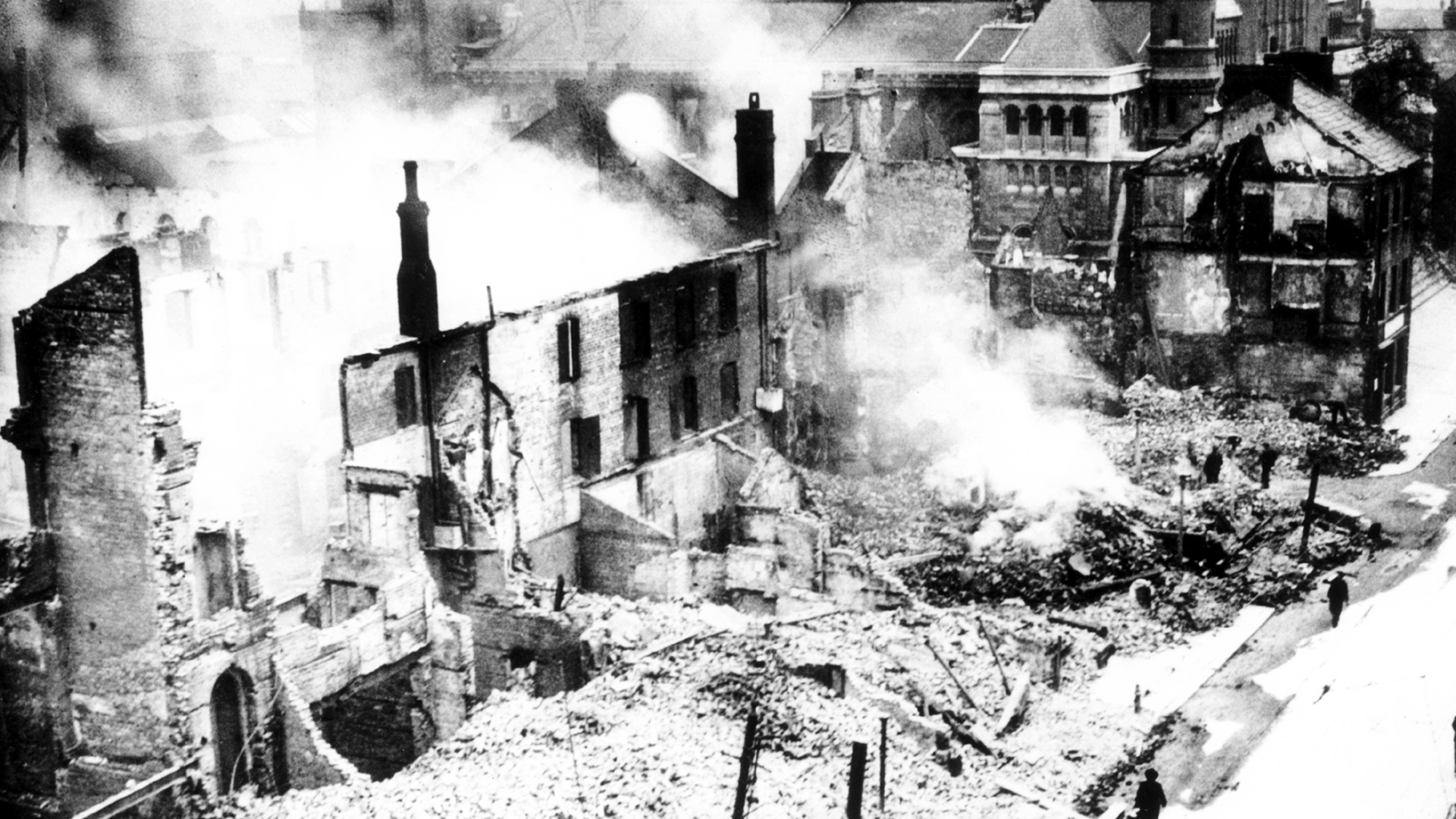St. Anne's Cathedral, sometimes referred to as Belfast Cathedral is a Church of Ireland cathedral. It serves both the Diocese of Connor and the Diocese of Down and Dromore. The laying of the foundation stone took place in 1899 and building took a period of over 80 years.
In September 1939, the outbreak of the Second World War brought blackout restrictions to Belfast. At St. Anne’s Cathedral, the evening service moved forward to 1800hrs rather than 1900hrs. It would later change again to 1830hrs. Wartime brought restrictions to many aspects of church life. Provision of teas for military personnel attending afternoon and evening services continued though.
Blackout material covered all windows, including the ornate stained-glass. Blue paint covered the east end windows and dark curtains prevented light escaping from the rest. Lights in the cathedral lowered to prevent a glow emitting from the clerestory. The windows and roof were the most valuable parts of the building.
The crypt beneath the church building would become a shelter in the case of a raid during a service. Adjustments included the addition of a platform to make entering the crypt via the old stone steps easier. Splinter blast walls offered further protection to the entrances.
The Belfast Blitz
In May 1941, the junction of Donegall Street and York Street was nothing more than rubble. Luftwaffe bombers had laid waste to much of what is now known as the Cathedral Quarter during the Belfast Blitz. By some miracle, St. Anne’s Cathedral remained standing, almost unscathed by the devastation.
Six of our churches are gravely injured – two of them hopelessly ruined. Our Cathedral has wonderfully escaped serious damage. Many windows were broken and minor injuries caused. The escape is the more remarkable as bombs fell close beside it.
Church Magazine, May 1941.
The following month, the same magazine reported completion of minor repairs. The author expressed his regret at the loss of the “Good Samaritan” stained-glass window.
In 1941, there was consideration towards removing windows from the chapel. In particular danger were those in the west front, the baptistery, the Chapel of the Holy Spirit, chancel, and nave. Wired double rolled cathedral glass would fill the spaces, while the original windows were in storage. This would have been expensive work to carry out. There were also problems arising from the potential of causing further damage to windows and where to store them. Protection would come from bricking up the windows or covering with sandbags.
The wooden roof structure was a fire hazard with the danger of incendiary bombs falling. The cathedral’s Buildings Committee recruited firewatchers and gathered equipment. There were 6 fire extinguishers, 20 buckets of water, 24 sandbags and 6 shovels and hoes. Three volunteers and one paid firewatcher would be on duty each night.
Twelve ex-choristers volunteered for firewatching duties. The paid watchers received £3-10-0 per week. Among them were two students from Queen’s University Belfast, a sculptor named Morris Harding, and a Mr. Hodgins. Expenses for Air Raid Precuations came from a Suspense Account. £10,000 over War Risk Insurance covered the organ, furniture, and vestments.
Life after the Blitz
The bombing caused some structural damage to St. Anne’s Cathedral. Stonework thrown from another building damaged the eaves, gutter, and roof over the crypt door. Replacement windows came in 1945 as blackout restrictions ended. War Damage Compensation paid for the work. Sun shone once again through the cathedral’s stained-glass during V.E. Day or Victory in Europe Day celebrations on Royal Avenue.
After the Blitz, there was a hope that post-war reconstruction of the city would include an open space between St. Anne’s Cathedral and York Street. This hope came true and the area is now Buoy Park, which includes the statue of boxing champion Rinty Monaghan.
Commemorative services at St. Anne's
| Date | Commemoration |
|---|---|
| 3rd October 2010 | Reception of Burma Star Association Standard |
| 15th April 2016 | 75th anniversary of the Belfast Blitz |
| 29th April 2018 | 100 Years of the Royal Air Force |
Memorials and Artefacts
The following forces flags, standards, and memorial stones are viewable in St. Anne’s Cathedral.
- 8th (Belfast Heavy Anti-Aircraft Regiment Memorial
- Burma Star Association Standard
- Burma Star Association Memorial Mosaic
- Dunkirk Veterans Memorial
- Irish Guards Association Ulster Branch Standard
- Irish Guards Memorial
- Merchant Navy Ensign
- Queen Alexandra’s Royal Army Nursing Corps Memorial Stained-Glass Window
- Royal Air Force Ensign
- Royal Inniskilling Fusiliers Standard
- Royal Irish Fusiliers Stamdard
- Royal Naval Standard
- Royal Navy Ensign
- United States Army Memorial Stars and Stripes
- Second World War Memorial Stained-Glass Window

